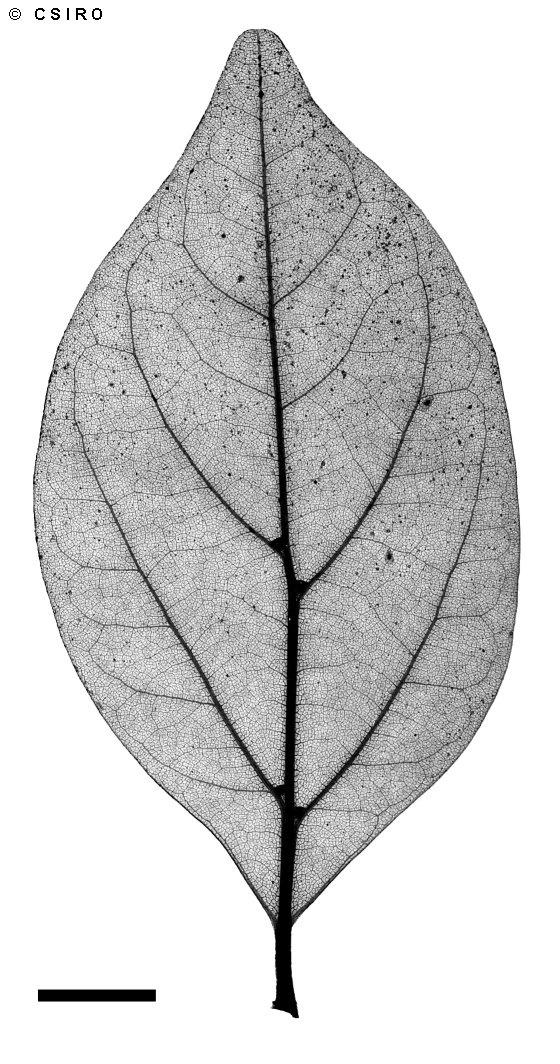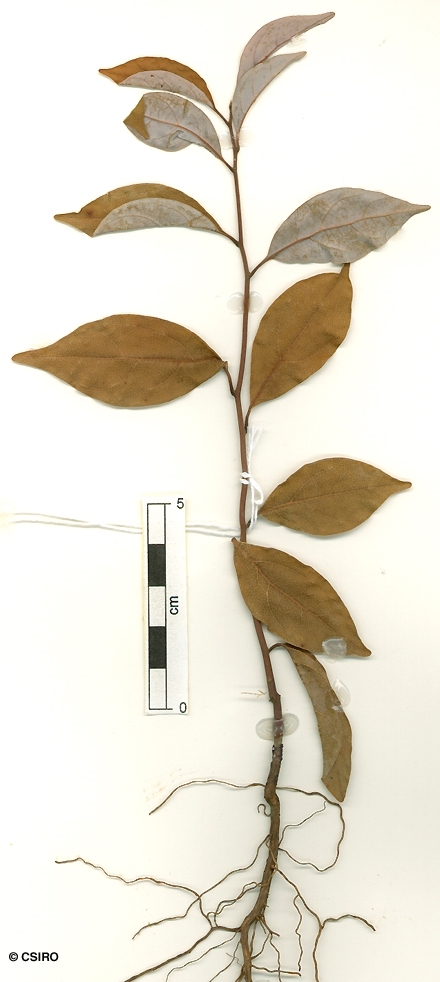Australian Tropical Rainforest Plants - Online edition
Endiandra discolor Benth.





Bentham, G. (1870) Flora Australiensis 5: 301. Type: Rockingham Bay, Dallachy; lecto: MEL; iso: K?; N.S. Wales. Macleay, Richmond and Hastings rivers, C. Moore; lectoparatypes: A, K, MEL.
Walnut, Rose; Rose Walnut; Domatia Tree
Usually a small tree, less than 30 cm dbh in northern Queensland but found as a larger tree in rain forest in other parts of Australia.
Twigs fluted, clothed in straight, appressed, pale brown hairs. Leaf blades about 5.5-10.5 x 2-4.5 cm, glaucous or white on the underside, clothed in short, straight, appressed, white or pale brown hairs. Foveoles conspicuous, usually about three to six per leaf, sometimes fewer or up to ten per leaf. Midrib flush with the upper surface. Petioles channelled on the upper surface. Oil dots visible with a lens.
Fruits ellipsoid, about 16-17 x 10-13 mm. Seed about 12-14 x 7-9 mm. Cotyledons cream to pink.
First pair of leaves elliptic or ovate-elliptic, about 35-45 x 15-25 mm, glaucous on the underside. At the tenth leaf stage: leaves glabrous on the upper surface, usually glabrous on the undersurface; foveoles sometimes present; oil dots clearly visible with a lens. Seed germination time 39 to 143 days.
Endemic to Australia, occurs in NEQ, CEQ and southwards to coastal central New South Wales. Altitudinal range in NEQ from 600-1100 m. Grows in rain forest and wet sclerophyll forest in NEQ. Many of the trees growing in wet sclerophyll forest have developed lignotubers and consequently can survive fires by producing shoots from the lignotubers when the aerial parts are killed.
This species produces millable logs and the sawn timber is marketed as Rose Walnut. Wood specific gravity 0.77-0.86. Hyland (1989).





